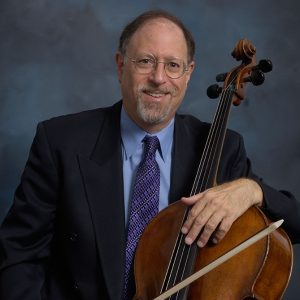
The Joy of Feuillard – A Sequential Approach to Teaching Bow Technique (Part 30 – Collé)
Robert Jesselson
I am “interrupting” my blog series on Feuillard with today’s post dealing with collé. I usually wait with working on collé in the private lessons until other technical aspects of the bow are internalized and solid. Part of the reason I do this is that I have found that students sometimes get confused by the use of the fingers for the vertical motion in string crossings as opposed to the use of the fingers in the horizontal collé motion. I find that it is better to solidify the string crossing motion before explaining the collé motion, since they are so similar and yet completely different. I do sometimes teach collé to all the students in my Saturday Pre-college classes. However, that is in a large group situation and I can only address the concept in generalities and am not able to focus on specific students and address their specific problems.
My pre-college student in today’s blog, and in the rest of the videos in this series, is George.
Collé is the French word for “glue”. It is used for marcato and martelé strokes, for the clear beginnings of notes, and also for bow changes. The motions of the fingers are the same as the ones used in string crossings (see Blog #20 with the Five Step process), except that now we pronate the arm slightly so that instead of moving the bow up and down for string crossing, the fingers move the bow to the left and right. Using the fingers alone will move the bow about 1-2 inches; by adding the wrist the bow will move about 4 inches.
At first it is difficult for some students to move the fingers to create the collé motion. They are so used to having a “square” position for the bow-hold, and to use the fingers for the vertical motion of string crossings, that it is hard for them to pronate the arm and to use the fingers to move the bow horizontally. Collé comes from the violin world, where the fingers on the bow are more slanted anyway. As a result it is a more “natural” movement for violinists to make.
In the next lesson we spent some more time with the basic motions. I reminded George to have the little finger close to the third finger. We also worked on keeping the palm of the hand flat when the fingers are in the “up” position, and we explored the importance of the flexibility of the thumb in this stroke. It usually takes a few lessons to get collé to start to feel comfortable and natural. These videos are clips of “real-time” portions of lessons on collé.
Learning collé is a “process”, and it usually takes several weeks of exercises and study to absorb the motions. By the third lesson George was starting to internalize the collé motions, and it was beginning to look more relaxed and natural. We started this session with some physical exercises for the finger motions and a focus on the thumb.
Next we applied the collé stroke to the Duport Etude #7. I use this etude with students after they have gone through Feuillard No. 35 (variations on three strings). We do a variety of bowings, including two and four note slurs, and sextuplets starting up-bow and down-bow, etc. I ask the students to memorize it so that they can focus on their bow hand instead of staring at the music. First we do chords all through the etude, so that they are comfortable with the left hand. With George I am using this etude to explore collé on different strings, with down- and up-bows. We also attached the arm to the cello in order to isolate the wrist and finger motions. Then when we free up the arm the motions seem easier. In this first lesson on the Duport I just demonstrated the “issues” and the ways to practice it using collé.
In the next lesson George was already doing the motions much better. But we still needed to review some of the elements and do some refinement of the strokes. He also had some good questions about how to do the pronation.
In editing the videos in today’s blog I preserved more of the teaching/learning process than in some of my past blogs. This is in order to show the pedagogical steps that are a necessary part of the process. Collé is a complicated and sophisticated element of our bow technique, and it takes some time to learn. By the end of this lesson, George was able to play the Duport using collé. Now he will need to continue focusing on this aspect of his bow technique in order to make it “part and parcel” of his playing.
Finally, I showed George how to use the collé motion in bow changes, combined with playing on the different sides of the strings, and culminating in “bow vibrato”. I discussed this in more depth in an earlier blog.
In the next blog we will return to the Feuillard “Daily Exercises” with theme No. 36, dealing with string crossings over four strings.
*If you have questions or comments about The Joy of Feuillard, Dr. Robert Jesselson can be reached directly at rjesselson@mozart.sc.edu.
Subjects: Repertoire, Technique
Tags: bow hold, collé, Duport, fingers, The Joy of Feuillard
